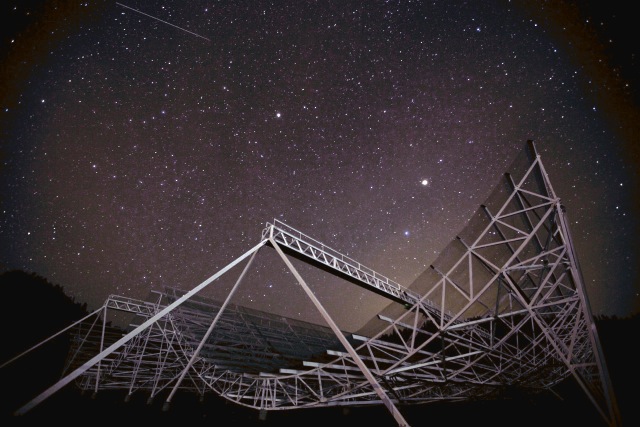Dr. Peter Klages, Dunlap Institute
The Canadian Hydrogen Intensity Mapping Experiment (CHIME) is located in a radio-quiet valley near Penticton, BC, and aims to study Baryonic Acoustic Oscillations for red-shifted hydrogen between z = 0.8 to z = 2.5. The CHIME telescope is a computational radio telescope composed of multiple parabolic cylinders with radio feeds at the focal line which are optimized for the 400 to 800 MHz band.
Traditional methods to use the data from parabolic cylinders can include beam-forming (by adding delays either in cabling, or in the computations), but the full N2 matrix of visibilities (correlations of channelized feed data) will be calculated for the Pathfinder version of CHIME. The Pathfinder is a scaled down version of CHIME with 1/10th the number of feeds (128 vs 1280 dual polarized feeds) and by computing the full N2 visibility matrix, data for the u-v plane will be collected while also allowing calibration factors that could be used for beam-forming to be calculated.
This talk will give a brief overview of the CHIME experiment, describe how complex visibilities are used in interferometry, introduce the basics/background of the programming language OpenCL, and give an overview of the GPU correlation algorithms used in the CHIME Pathfinder.
Dr. Klages is working at the Dunlap as an IBM employee as part of the Southern Ontario Smart Computing Innovation Platform (SOSCIP). He joined the Dunlap Institute in May 2013.

